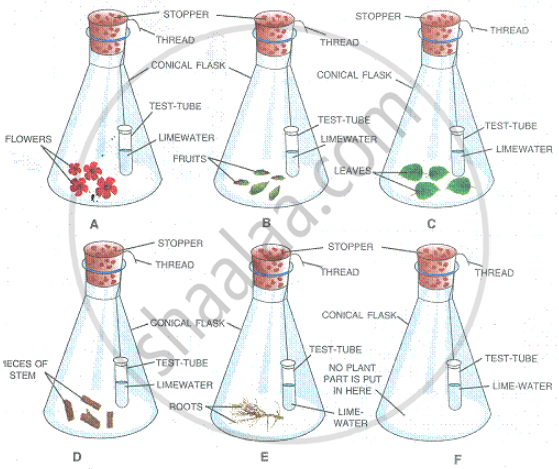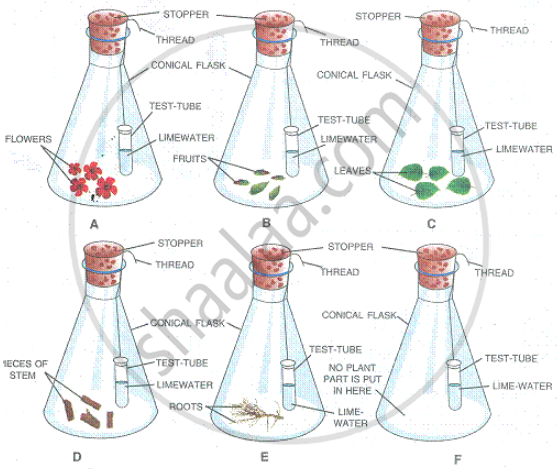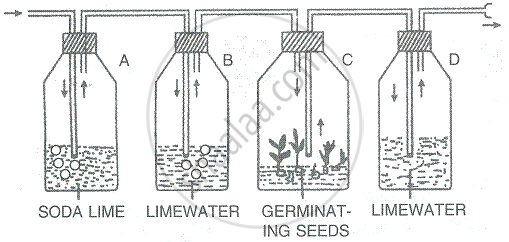Advertisements
Advertisements
प्रश्न
Given below is a set of six experimental set-ups (A-F), kept in this state for about 24 hours.

In how many flasks, the different plant parts have been kept under observation?
उत्तर
Five flasks (A-E) are having different plant parts for observation.
APPEARS IN
संबंधित प्रश्न
Describe one experiment you would perform to demonstrate the following phenomena: The germinating seeds produce heat.
Describe one experiment each of you would perform to demonstrate the following phenomena: The germinating seeds can respire even in a total absence of air.
The following diagram refers to an apparatus which is used to demonstrate a physiological process:

What is the purpose of keeping potassium hydroxide solution in test tubes X and Y?
The following diagram refers to an apparatus which is used to demonstrate a physiological process:

Why has the coloured water risen in tubing 1?
Given below is a set of six experimental set-ups (A-F), kept in this state for about 24 hours.

What is the purpose of keeping a test-tube containing limewater in each flask?
Given below is a set of six experimental set-ups (A-F), kept in this state for about 24 hours.

What conclusion can you draw from this experiment?
In order to study and prove a particular physiological process in plants, the following experiment was set up. Study the same and then answer the question that follow:

Represent the physiological process named in question 4.1 in the form of a chemical equation.
Given alongside is an experimental set up to demonstrate a phenomenon in a plant:
(a) What is the aim of this experiment?
(b) Why was the bell jar covered with a black cloth?
(c) What is the function of caustic soda in this experiment?
(d) Give an overall chemical equation of the process mentioned in (a) above.
(e) Mention one precaution that should be taken to ensure more accurate results. What change, if any, would you observe in the lime water in Flask A and B? In each case give a reason for your answer.

Name the following:
The chemicals generally used to absorb carbon dioxide in respiratory experiments.
Name the following:
The solution that turns milky when carbon dioxide is passed through that solution.
